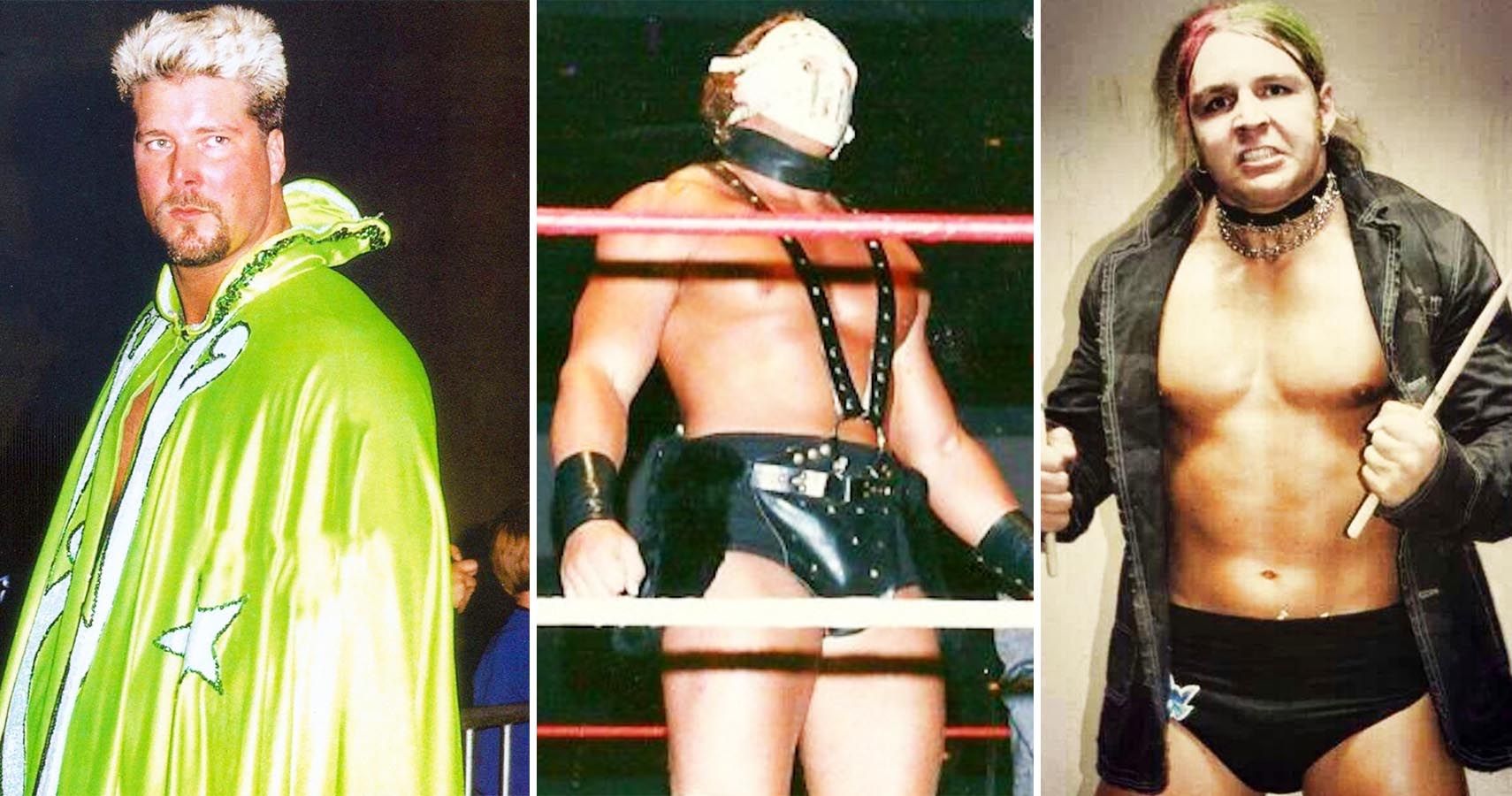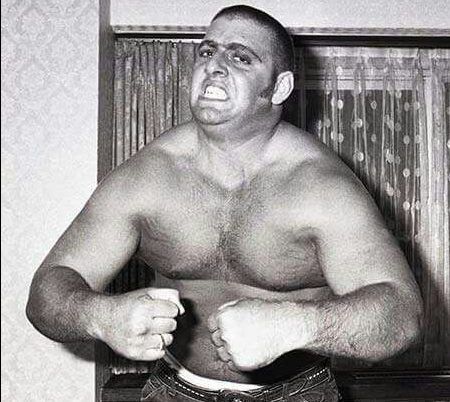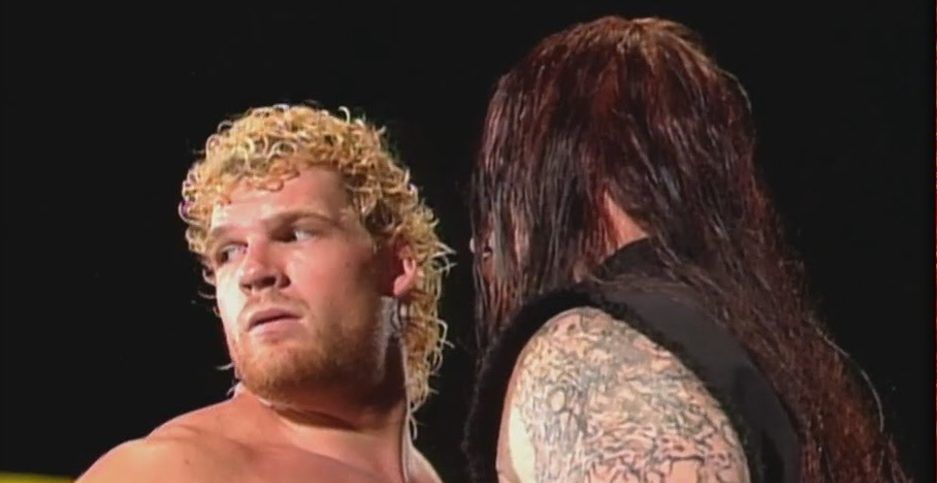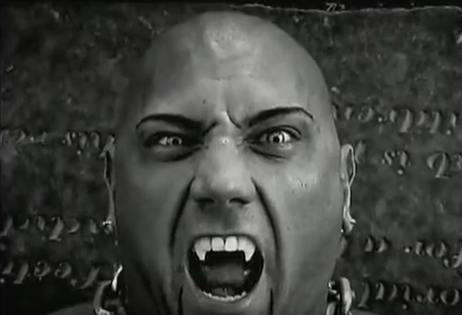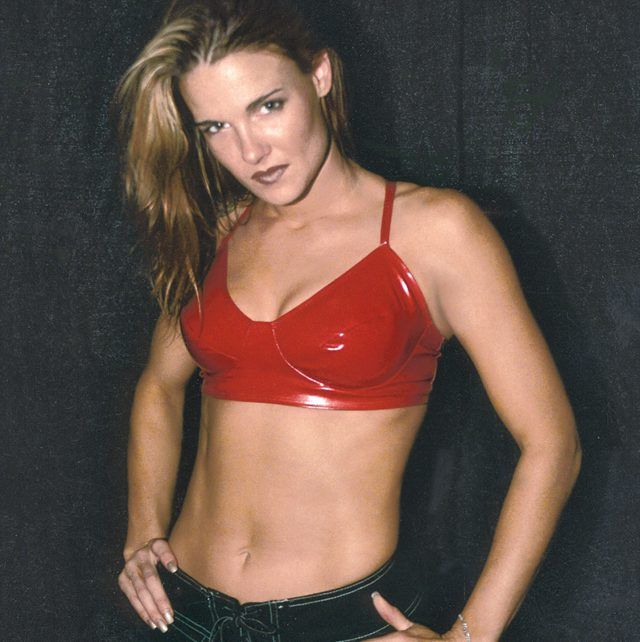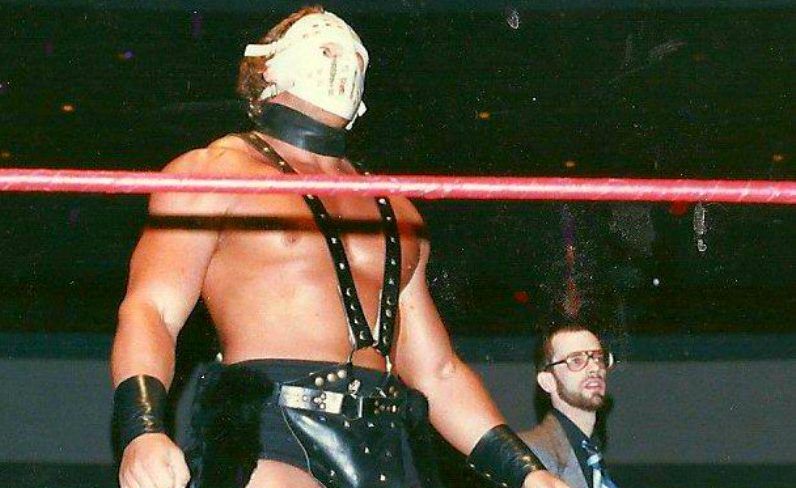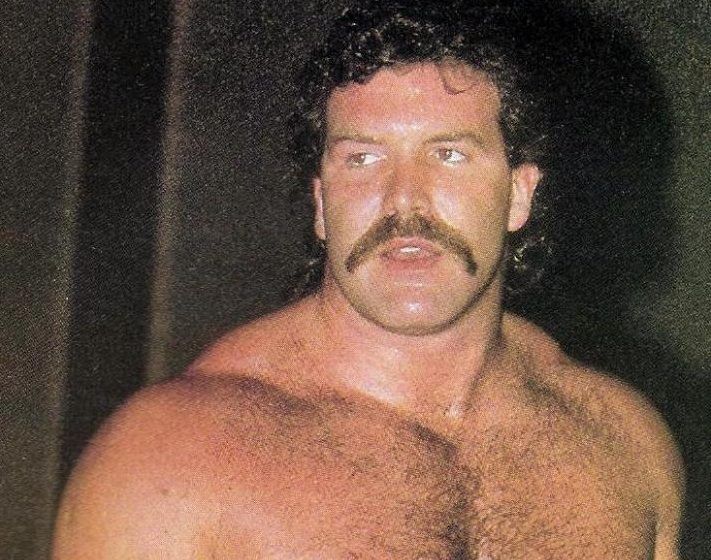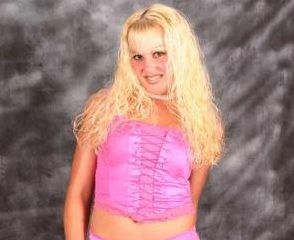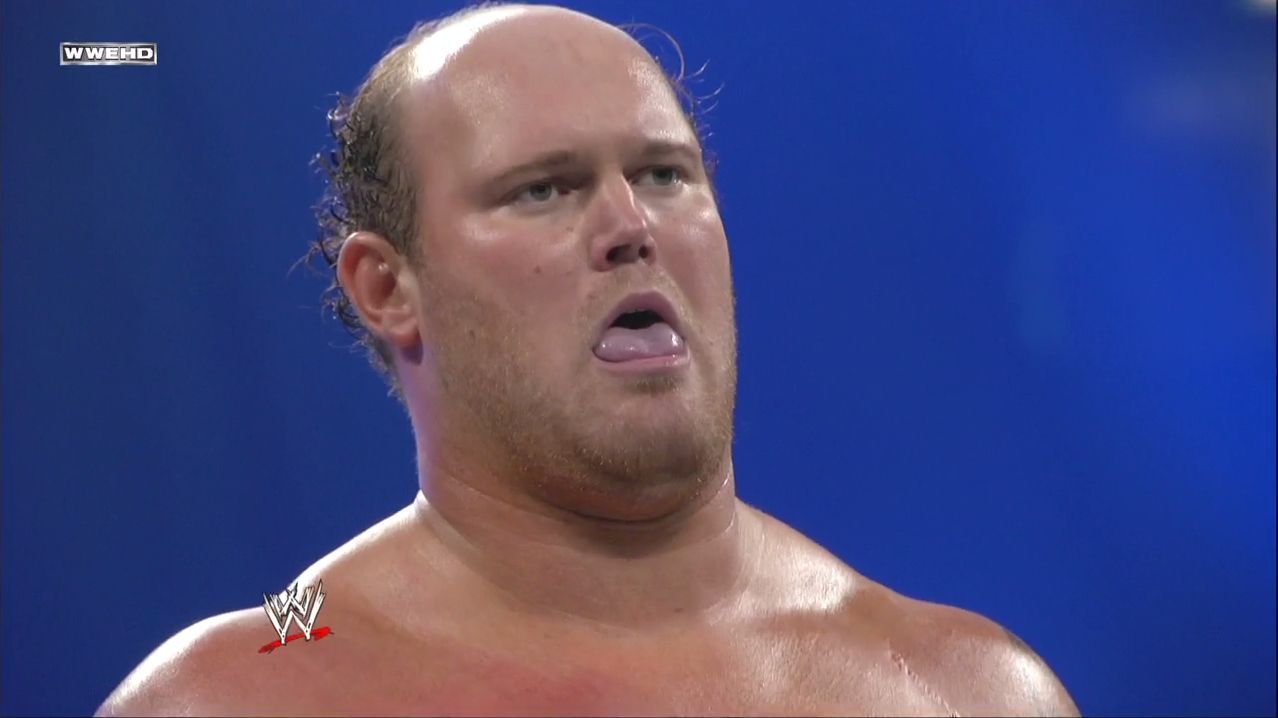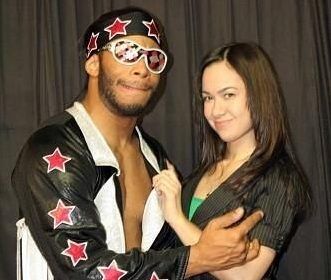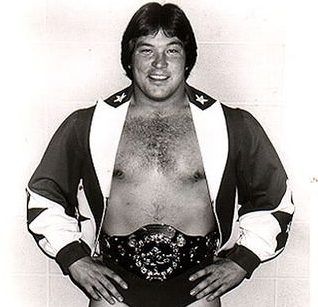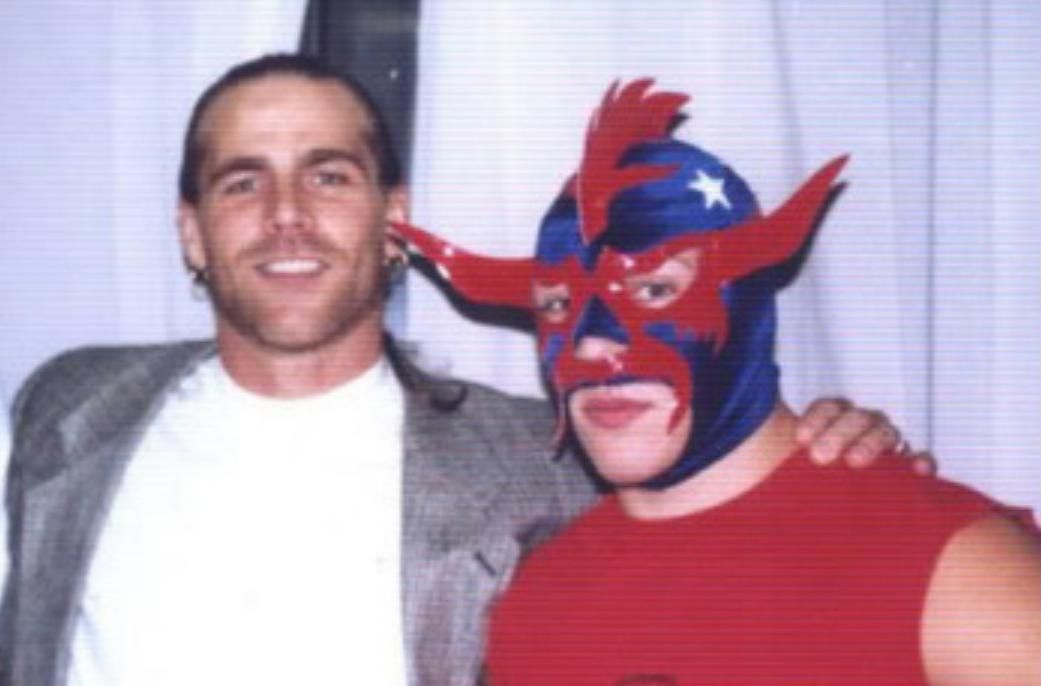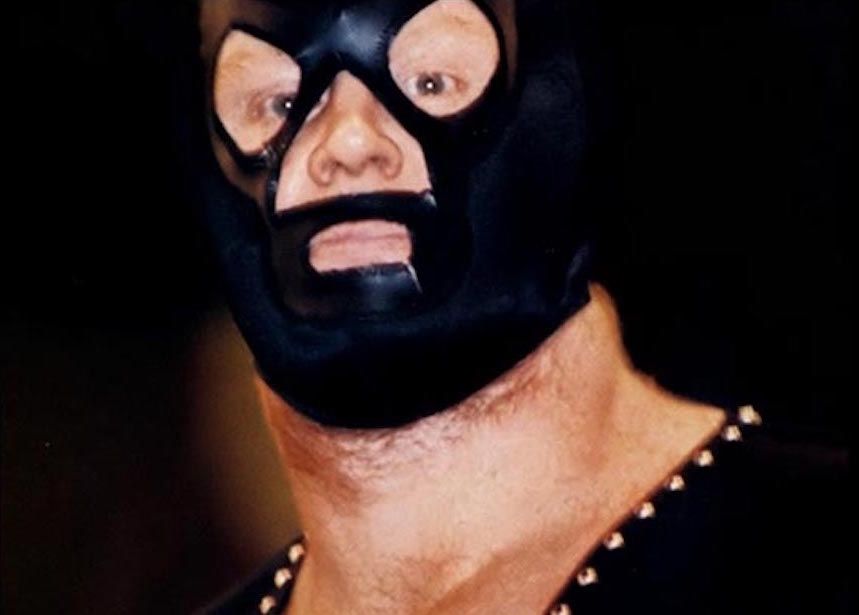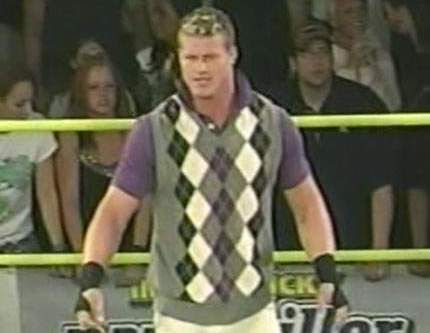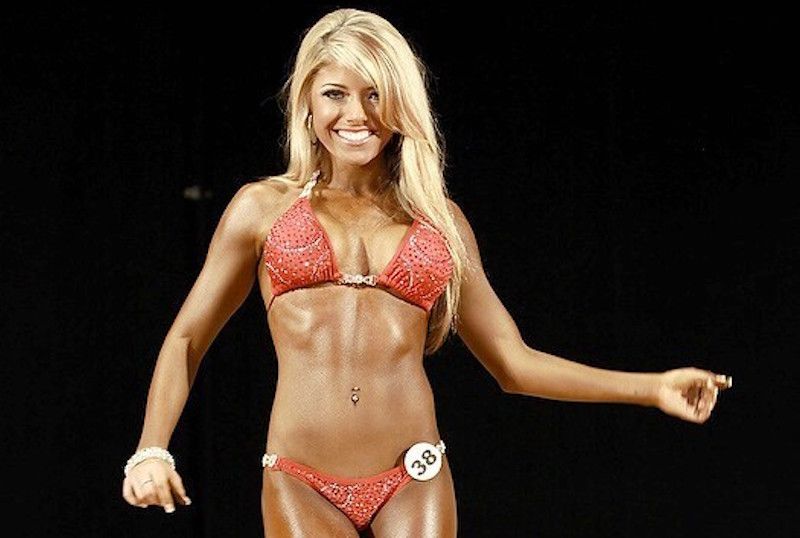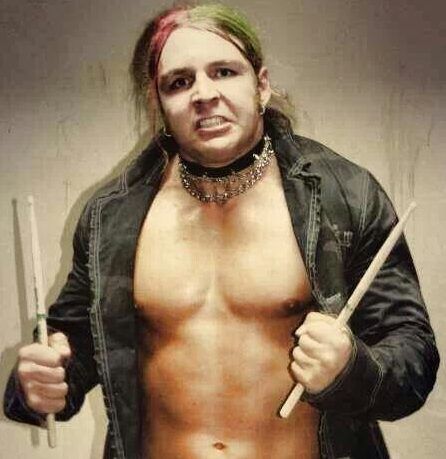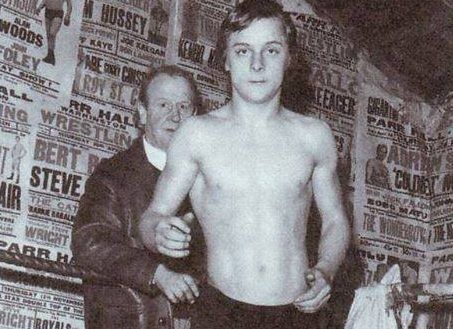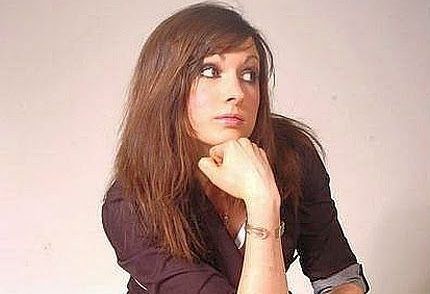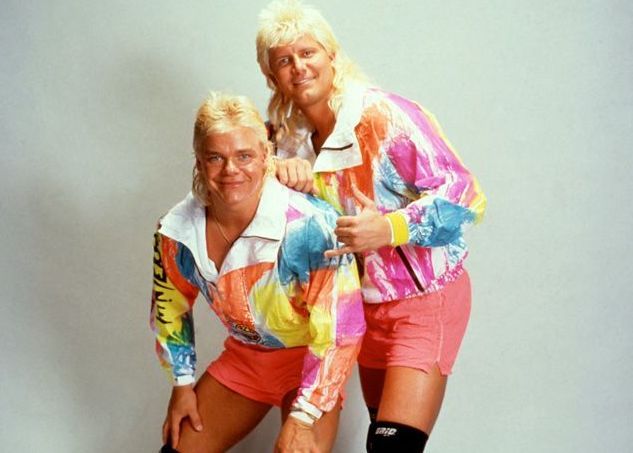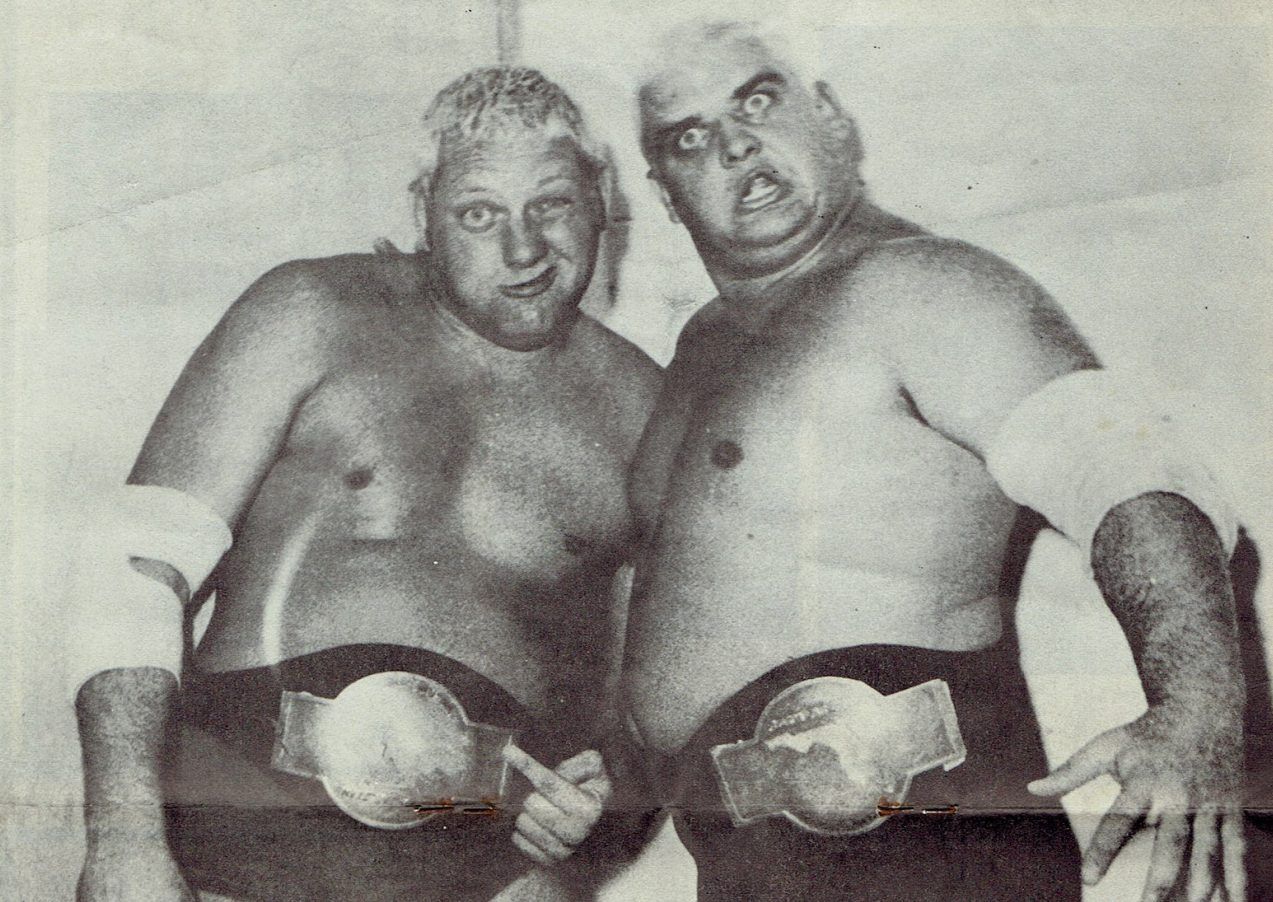Just how important is a wrestler’s image? Is it the be-all and end-all in the business?
The image-obsessed WWE at times in its history has insisted on a complete gimmick overhaul or, at the very least, an addition to a wrestler’s costume or entrance.
In the 1980s, everyone needed a nickname or prop: even NWA greats Harley Race and Dusty Rhodes had to change their costuming in order to find work in Vince McMahon’s company.
In the first half of the 1990s, almost everyone was provided with a wacky character that typically came with a Day-Glo costume. Remember Kona Crush, Adam Bomb, Duke “The Dumpster” Droese, Men On A Mission, Nailz and Papa Shango? During this period, Scott Hall’s Razor Ramon was one of the few diamonds in the rough.
While WWE is synonymous with characters in wrestling, they were around long before Vince McMahon Sr. and his partners formed the World Wide Wrestling Federation in 1963.
Gorgeous George, still one of the most flamboyant wrestlers to ever enter the ring, was the biggest star in the profession in the late 1940s and early 1950s. It would be impossible to count the number of wrestlers “The Human Orchid” influenced in some form or fashion. Promoters too. The current WWE Chairman is on that list.
Is image everything in wrestling? There are exceptions, as always. That said, you can understand why many of the following performers changed their image or appearance. It’s safe to state that most would never have made it as big as they did, if they looked like this.
30 30. RIC FLAIR
The wrestler who was renowned in the '80s for his unmatched conditioning, bleach-blond hair and exquisitely tailored robes looked utterly different in his early years in the AWA.
Flair, who wrestled in the AWA from his December 1972 debut through to 1974, sported short brown hair and a fleshy powerlifter’s physique. Nevertheless, as the 1974 match with former superheavyweight amateur wrestler Chris Taylor confirms, his in-ring talent shone through. Flair, as he would in many matches throughout his career, did most of the legwork.
Just before he left the AWA for Jim Crockett’s Mid-Atlantic territory in 1974, Flair bleached his hair blond and began turning that excess fat into defined muscle.
In 1975, George Scott, the Mid-Atlantic booker, decided to remodel Flair as “The Nature Boy”, after Buddy Rogers, complete with a strut and figure-four leglock finisher. It was an ambitious undertaking: a former NWA and WWE World Champion, Rogers had been wrestling’s biggest star of the late 1950s and early 1960s.
As you know, Ric pulled it off.
29 29. KANE
If there were an award for most tenacious wrestler of the 1990s, Glen Jacobs would win it, no contest.
Jacobs had to suffer the indignity of wrestling as the Christmas Creature in the USWA, and jobber Bruiser Mastino in WCW. The character Doomsday, which he portrayed in the USWA and Puerto Rico, was an improvement, although it had little traction.
Renamed Unabom, Jacobs held the Smoky Mountain Wrestling Tag Team Title with Al Snow in 1995. It was while Jacobs was wrestling as Unabom that he wrestled The Undertaker for the first time at SMW’s Super Bowl Of Wrestling event on August 4, 1995 in Knoxville, Tennessee.
By this time, Jacobs had been introduced on WWE television as Dr. Isaac Yankem. It was a step backwards: the deranged dentist character was not a hit. There was worse news on the horizon: Jacobs’ turn as the impostor Diesel in 1996 was the flop by which others would be judged.
No wonder WWE stuck a mask on Jacobs when he became Kane, the character which would finally make him a star, in 1997.
28 28. BATISTA
Dave “Batista” Bautista’s first foray into the world of pro wrestling ended in disaster. In a 1998 tryout for the Power Plant, WCW’s training school, Dave was run ragged by trainer Buddy Lee Parker. It didn’t help that Dave was a 340-pound muscle mountain, who was hopelessly ill-equipped to withstand the endless squats and drills that trainees had to endure, if they were to be accepted by the Power Plant. Dave failed the test. According to his autobiography, Batista Unleashed, a scathing Parker’s parting words to him as he was shown the door were that he would never make it as a pro wrestler.
Despite this rejection, Dave was accepted by Afa’s wrestling school in Allentown, Pennsylvania the next year, and was signed to a WWE developmental contract and posted to farm league Ohio Valley Wrestling in 2000. There, Dave Bautista became Leviathan, “The Demon Of The Deep”, who allegedly originated from the Ohio River.
Sporting contact lenses and fangs, the bald-headed Leviathan was a wacky character, which would have been right at home in the early 1990s WWE. For that reason, perhaps, it never made the transition to the main WWE roster when Dave was called up in 2002.
27 27. LITA
Amy Christine Dumas travelled from the United States to Mexico City, Mexico in 1998 to train for a career in pro wrestling. That was the nerve center of lucha libre, so that’s where she believed her journey into pro wrestling should begin.
She had never trained for wrestling and had no contacts in the country. But the confidence of ignorance, coupled with her looks and willingness to learn, were enough to persuade CMLL to feature her on television in vignettes and teach her the basics.
When her money ran out, Miss Dumas returned home to continue her training in the States.
In early 1999, she hit the independent circuit. That summer, she was hired by Paul Heyman to work as a wrestler and personality in ECW, under the names Angelica and Miss Congeniality. Everything happened so quickly.
Amy’s ECW career was short-lived as well. In October, she received an offer from WWE, a mere 18 months after her journey had begun in Mexico City. She was reborn as Lita in February 2000.
26 26. SID VICIOUS
The 1981 Mel Gibson movie The Road Warrior/Mad Max 2 inspired more wrestling characters than any other film that decade.
Most famously, there were The Road Warriors, Hawk and Animal, and Demolition, Ax and Smash. To less fanfare in smaller promotions, there were others, seeking to cash in on the post-apocalyptic wrestling gimmick craze.
Among them was the towering Sid Eudy, who was billed as Lord Humongous in Alabama’s Continental territory in 1988.
Modelled on the muscular lead villain in The Road Warrior flick, Sid wore a hockey mask and a leather bondage outfit. He definitely had the physique to bring the character off. In July 1988, Lord Humongous captured the Continental Tag Team Title with Shane Douglas.
Ditching the mask and studded leather attire, Sid took the name Sid Vicious and signed a WCW contract the next year. Some in wrestling confidently predicted that he would become a future World Champion after he decimated Lee Scott in this match in spectacular fashion... They were right.
25 25. SCOTT HALL
For years, Scott Hall was considered a massive underachiever in pro wrestling. Debuting in 1984, when heavily muscled wrestlers who stood nearly six-and-a-half-feet tall were all the rage, big things were expected from the big man.
However, he bombed in a team with Dan Spivey in Jim Crockett’s territory and, as the moustachioed “Magnum” Scott Hall in the AWA, was viewed as a cheap imitation of the NWA’s popular Magnum T.A. A four-month AWA World Tag Team Title reign with Curt Hennig in 1986 failed to bolster his reputation: Hennig was viewed as the senior member and future singles star of the combo.
The large yet otherwise unremarkable Hall flagged in Memphis, WCW and Puerto Rico for the remainder of the decade. Stardom seemed as far from reach as ever. However, the leather-clad Diamond Studd character he played in WCW in 1991 proved he had pizzazz upon which WWE expertly capitalised with the Hispanic Razor Ramon persona in 1992. Eight years after his debut, Hall was a star.
24 24. VELVET SKY
Jamie Lynn Szantyr was a regular on the Northeast independent circuit in the mid-2000s as a wrestler and manager/personality, under the names Miss Talia and Talia Madison.
In The Blue Meanie’s Philadelphia-based 3PW league in 2004, she appeared several times with Matt Striker during his impressionist phase. The blonde, frizzy-haired Talia became his Miss Elizabeth when Striker parodied Randy Savage.
Her relationship with Shane Helms may have facilitated her appearances as an extra on WWE television in 2005 and 2006, but it wasn’t enough to earn her a place in WWE’s 2007 Diva Search competition. After she had failed to make the final eight, she reached out to TNA.
Renamed Velvet Sky, she worked for TNA, on and off, for nine years, most famously as a member of The Beautiful People with Angelina Love and Madison Rayne.
23 23. LUKE GALLOWS
They do say that comedy can only take you so far in pro wrestling, and that was true of Luke Gallows under his WWE persona of Festus a decade ago.
Real name Andrew Hankinson, he had a brief stint as the impostor Kane in 2006. One year later, he became Festus, a country bumpkin who appeared slack-jawed and dopey, until the opening bell rang and he metamorphosed into a raging madman. When the bell sounded to signal the end of the match, Festus reverted to his docile state.
Festus was reinvented as Straight Edge Society member Luke Gallows in November 2009. He blamed his previous gimmick on a “prescription pain pill addiction”, and thanked CM Punk for showing him the light.
As Gallows, he did little in WWE before he was released from his contract in late 2010. When he returned to WWE in 2016, having ripped it up in New Japan for two years with Karl Anderson and the Bullet Club, his reinvention was so effective that Vince McMahon was apparently unaware that he had once played Festus in his company.
22 22. AJ LEE
As a teenager in the early 2000s, April Mendez was a huge wrestling fan, particularly of Lita, which would prove to be quite the coincidence in later life. Amy “Lita” Dumas and CM Punk were an item outside the ring in 2013. One year later, Mendez married Phil “CM Punk” Brooks.
In 2007, aged 20, April attempted to turn her passion for wrestling into a career when she enrolled in a wrestling school in New Jersey, where she was trained by future boyfriend Jay Lethal (pictured). She spent the next two-and-a-half years on the independent circuit, which she described as “God awful” in a 2013 interview with Bleacher Report.
Signing with WWE changed everything. She entered the company’s training system in Florida, and rose to national prominence in 2010 when she was selected as one of the rookies on the all-female season of NXT. She became a star in her own right in WWE as a personality and wrestler in 2012. She announced her retirement from wrestling in 2015.
21 21. TED DIBIASE
There has been no company better at ignoring and rewriting wrestling history than WWE over the last three decades. Why, prior to WrestleMania III in 1987 as part of the hype for Andre The Giant’s showdown with Hulk Hogan, WWE led its viewers to believe that Andre had never been bodyslammed or defeated. Neither was true, of course.
It was in May 1987, two months after WrestleMania III, that Ted DiBiase was unveiled by WWE as the villainous, cash-flaunting “Million Dollar Man”. While this particular character had never been seen before in WWE, DiBiase had.
In 1979, DiBiase, who was by then a four-year veteran and highly respected all-rounder, wrestled for WWE as a humble, honest babyface. The company’s first North American Champion, DiBiase eventually lost the title to Pat Patterson on June 19, 1979.
In another notable match on December 17 that year, DiBiase was defeated by The Fabulous Hulk Hogan in Hogan’s debut at Madison Square Garden.
None of this was acknowledged by WWE in 1987.
20 20. DANIEL BRYAN
Real name Bryan Danielson, future WWE superstar Daniel Bryan was trained by former WWE Heavyweight Champion Shawn Michaels in 1999, following Michaels’ first retirement from wrestling due to a severe back injury.
Bryan was in the same class as Paul London and Brian Kendrick, two other superlative workers who had WWE success.
Bryan made his pro wrestling debut in October 1999 for the Texas Wrestling Academy, the sister organisation to Michaels’ school in San Antonio he had formed to enable his trainees to grow as performers by gaining experience interacting with crowds.
Assuming the ring name “American Dragon”, Bryan wrestled under a mask from time to time early in his career. He donned the mask when he wrestled in the UK in the early 2000s and for other promotions around the world. Bryan travelled extensively in the 2000s. There were very few organizations he hadn’t worked for before he signed with WWE in September 2009.
19 19. THE UNDERTAKER
After spending three years wrestling in the fading territories in Texas and Tennessee as Texas Red, The Master Of Pain and The Punisher, Mark Calaway appeared to hit the big-time on January 3, 1990 when he debuted for WCW as the replacement for Sid Vicious in The Skyscrapers tag team alongside Dan Spivey, under the management of Teddy Long.
Known as Mean Mark and Mean Mark Callous, Calaway was a far better athlete and in-ring performer than Vicious, but lacked Vicious’ charisma and presence at that time.
When Spivey was fired by WCW in March 1990, Mean Mark went solo under Long’s leadership. A few months later, Paul E. Dangerously purchased the management contract from Long.
Under new management, Mark received a renewed push, which included a match with US Champion Lex Luger at The Great American Bash in July. Though Callous entered a sterling performance against Luger, he surprisingly left the company fewer than two months later.
Even more surprising in November 1990 was his transformation into The Undertaker in WWE.
18 18. DOLPH ZIGGLER
As a star amateur wrestler at Kent State University from 2000-2003, Nick Nemeth likely never envisaged that he would play Chavo “Kerwin White” Guerrero’s golf caddy or a male cheerleader when he signed a WWE developmental contract.
But that’s what happened. When Kerwin White was abruptly dropped and Chavo reverted to the Guerrero name, following the death of his uncle Eddie in November 2005, Nemeth returned to WWE developmental to form The Spirit Squad.
In January 2006, Nemeth resurfaced on the main WWE roster as Nicky, one-fifth of the green tracksuit-clad Spirit Squad. Though they held the WWE Tag Team Title and were linked with Vince and Shane McMahon, the purposely annoying, hyperactive Spirit quintet absorbed far more punishment than they dispensed. On RAW in November 2006, the five were crushed by Triple H and Shawn Michaels and supposedly packed into a flight case and shipped back to OVW.
Nemeth had to wait nearly two years before he received another chance on the main roster as Dolph Ziggler. He’s still there.
17 17. ALEXA BLISS
The current RAW Women’s Champion, who describes herself as “Five Feet Of Fury”, took the similar path into wrestling as Zivile Raudoniene (Aksana) and Celeste Bonin (Kaitlyn).
Real name Alexis Kaufman, she was a competitive bodybuilder from 2010-2013. She placed first in the IFBB North American Championships in 2011 and also competed at the Arnold Classic, under the name Lexi Kaufman.
Her bodybuilding career ended in 2013 when she was offered a WWE contract and began training at the Performance Center in Orlando, Florida.
As Alexa Bliss, she made her debut as a babyface in 2013 but, from the start, it was clear this woman was born to be a heel, a role in which she has excelled on SmackDown and RAW over the last year.
16 16. DEAN AMBROSE
Jonathan Good, the man whom the world knows as Dean Ambrose, was trained at the Heartland Wrestling Association in his hometown of Cincinnati, Ohio from 2003-2004.
Good came from a deprived background and incorporated the challenges of his childhood into the character of Jon Moxley, which he created for himself on the independent circuit.
Brimming with anger, Moxley was convinced the world had kicked dirt on him his entire life and was hellbent on settling the score by taking out one opponent at a time — or something like that. An outcast, Moxley was, by his own admission, a sick man who enjoyed making people feel uncomfortable.
Moxley wrestled for the IWA, Insane Pro Wrestling, CZW — where he participated in the 2009 Ultraviolent Tournament Of Death — and many other companies. All the hardship and bloody matches paid off in 2011 when he inked a WWE contract and became Dean Ambrose, a watered down, PG-rated version of the unbalanced Mox character.
15 15. THE DYNAMITE KID
The Dynamite Kid was just 16 when he made his pro debut in 1975 on the British wrestling circuit. That said, he was ready: he’d trained six days a week for three years before he had his first match.
In April 1977 aged 18, Dynamite captured the British Lightweight Title. The following year, he won both the British and European Welterweight Titles. That Dynamite was as thin as a rake mattered not in Europe: the scene was split into weight divisions, and he typically wrestled opponents of a similar size.
While being slender was no bar to success on his home continent, conditions were different further afield. Dynamite felt he needed to pack on extra muscle in order to believably wrestle larger opponents in Stampede Wrestling, after he had emigrated to Canada in 1978, and in Japan and WWE in the 1980s.
It was after he relocated to Canada that Dynamite was introduced to the muscle-enhancing benefits of injectable steroids. Aided by the steroid needle, he soon bulked up.
“I knew that I had to take [steroids], otherwise I wouldn’t have got a job,” Dynamite said in The Power Slam Interviews Volume 1. “Off steroids, I could only get up to about 180 pounds. When I was on steroids, I weighed about 225.”
Dynamite did have a point. The slender lad pictured above would never have been hired by WWE in the mid-1980s.
14 14. BECKY LYNCH
Though you would never believe she was old enough by looking at her, the woman WWE fans recognize as Becky Lynch has been wrestling, on and off, for almost 15 years.
Real name Rebecca Quin, she was known as Rebecca Knox after training under Fergal Devitt in her native Ireland.
After dropping out of university in 2005 to pursue the wrestling dream, she moved to Canada, where she wrestled a few times per week. Bookings in Japan and Europe, following her return home, kept the wrestling dream alive.
However, her interest in wrestling waned in the second half of the 2000s. Leaving wrestling entirely, she worked as a personal trainer and a flight attendant for Irish airline Aer Lingus.
While flirting with acting and stunt work, Rebecca caught the wrestling bug again. The timing was fortuitous. She was offered and signed a WWE contract in 2013, and was subsequently reborn as flamed-haired lass-kicker Becky Lynch.
13 13. JUSHIN LIGER
Keiichi Yamada was originally rejected by New Japan Pro Wrestling on the grounds that he was too small, at five-feet four-and-a-half inches, when he applied to enter the company’s Dojo.
Undeterred, he travelled to Mexico in 1983 to learn the art of lucha libre. While there, he was spotted by a New Japan talent scout, ironically, who was so impressed by his skill level that he offered him a spot in the company’s training system, despite his height. It was mission: accomplished.
Training alongside Keiji Muto, Masa Chono and Shinya Hashimoto, Yamada made his NJPW debut in March 1984. Yamada was a popular talent, who impressed fans in Japan and Canada and the UK when he was sent overseas for seasoning. Back in Japan, he wowed fans with the shooting star press, the hottest aerial move in the business, from 1987-1988. As gifted as he was, NJPW believed Yamada needed something extra — a gimmick — to elevate him to true stardom. The add-on they chose was the mask and costume of the Jushin Liger character, which he assumed in April 1989.
The gimmick made all the difference. As Liger, Yamada became an international sensation.
12 12. SHANE DOUGLAS
Shane Douglas was part of Bill Watts’ rough, tough UWF in 1987. A hot prospect, Douglas’ appearance made him a natural babyface, but he had untapped heel potential as well. After the UWF was purchased by Jim Crockett Promotions in late 1987, Douglas wrestled for JCP briefly, then had a stint in Alabama while Eddie Gilbert was booking the territory, before he received an offer from WCW in 1989. He became one-half of The Dynamic Dudes, with Johnny Ace.
“It was the most lucrative part of my career, but it was also the worst part of my career,” observed Douglas in a 1994 interview with Power Slam magazine.
He was right. The Dynamic Dudes gimmick was a standing joke — a laughing stock.
“We were sugar-coated to such a degree, it was ridiculous,” Douglas added in the PS interview. “I mean, we looked like total goofs with those skateboards . . . Instead of wrestlers, Johnny and I were more like a couple of punks that people couldn’t wait to see get their asses beat.”
Astonishingly, The Dynamic Dudes was not a career-killer for either man.
11 11. DUSTY RHODES
Dusty Rhodes’ first taste of stardom was as a villain in a tag team with Dick Murdoch in the Kansas City territory in 1968.
Known as The Outlaws and The Texas Outlaws, Rhodes and Murdoch won the NWA Central States tag team title in November 1968. It would be the first of several titles the partnership would collect on their travels, which would take them as far away as Australia, where they captured the IWA Tag Team Title in 1971.
Though their renegade characters befit their Outlaw moniker, Rhodes and Murdoch were a refined act in the ring: superb brawling-style wrestlers, who knew how and when to sell for their babyface foes. These included veterans Dick The Bruiser and Crusher during their AWA tenure from 1972-1973.
It was in the AWA that The Outlaws enjoyed their last prolonged run as a tag team. Rhodes went solo and turned babyface in May 1974. He would become one of the biggest drawing cards in the country for the next decade.

